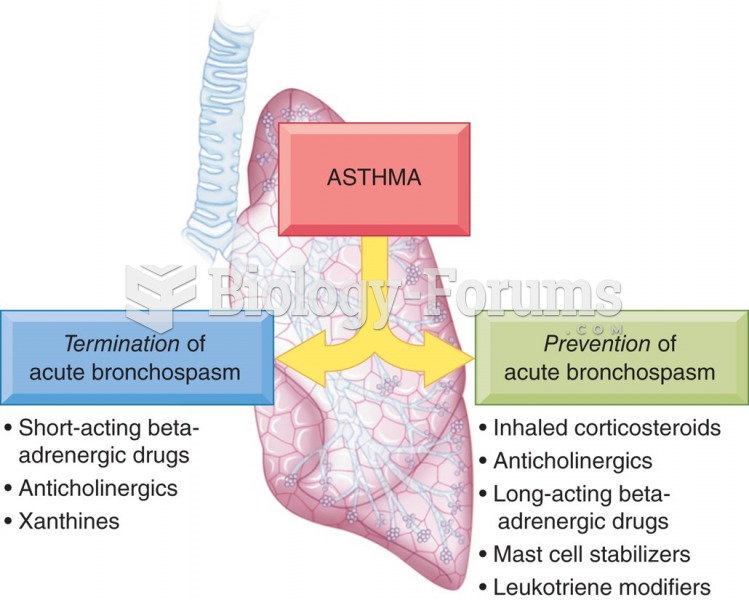Answer to Question 1
Correct Answer: 2
Rationale 1: Salmeterol (Serevent) is not a nonselective agonist.
Rationale 2: Salmeterol (Serevent) is a selective beta-2 agonist with fewer cardiac side effects and a longer duration of action. Its effects are delayed, but persist for up to 12 hours. Hence it can be used as pharmacotherapy for chronic asthma.
Rationale 3: Salmeterol (Serevent) has no action on alpha-1 receptors.
Rationale 4: Salmeterol (Serevent) has no effect on beta-1 receptors.
Global Rationale: Salmeterol (Serevent) is a selective beta-2 agonist with fewer cardiac side effects and a longer duration of action. Its effects are delayed, but persist for up to 12 hours. Hence it can be used as pharmacotherapy for chronic asthma. Salmeterol (Serevent) is not a nonselective agonist. Salmeterol (Serevent) has no action on alpha-1 receptors or beta-1 receptors.
Answer to Question 2
Correct Answer: 1,3,4
Rationale 1: Oxymetazoline (OcuClear) is an alpha-1 adrenergic agonist. Activation of these receptors in the arterioles of the eye causes vasoconstriction and stinging.
Rationale 2: Oxymetazoline (OcuClear) is used as an ophthalmic solution and does not reach high levels in the blood or cause any dizziness.
Rationale 3: Oxymetazoline (OcuClear) is an alpha-1 adrenergic agonist. Activation of these receptors in the arterioles of the eye causes blurred vision and sensitivity to light.
Rationale 4: Oxymetazoline (OcuClear) is an alpha-1 adrenergic agonist. Headache or brow pain is a frequent side effect early on.
Rationale 5: Oxymetazoline (OcuClear) is an eyedrop used for conjunctival redness and does not cause vomiting.
Global Rationale: Oxymetazoline (OcuClear) is an alpha-1 adrenergic agonist. Activation of these receptors in the arterioles of the eye causes vasoconstriction and stinging, blurred vision and sensitivity to light, as well as headache or brow pain early on in treatment. Oxymetazoline (OcuClear) is used as an ophthalmic solution and does not reach high levels in the blood or cause any dizziness. Oxymetazoline (OcuClear) is an eyedrop used for conjunctival redness and does not cause vomiting.







